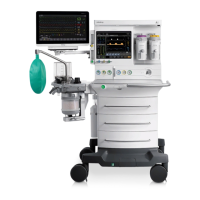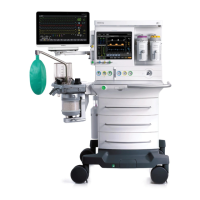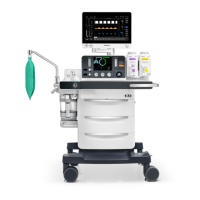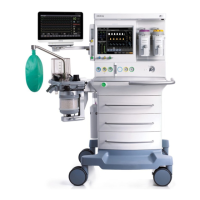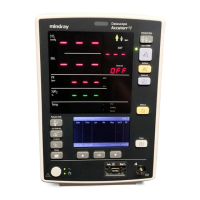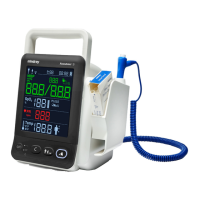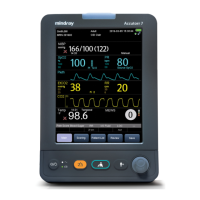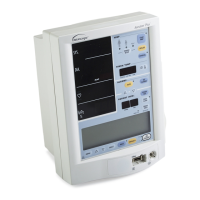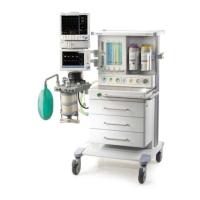2-1
2 Theory of Operation
2.1 System Overview
2.1.1 Introduction
The A8/A9 Anesthesia System is a simple and convenient anesthetic gas delivery system that
produces anesthesia gas and controls delivery of anesthesia gas by using a configured vaporizer.
It supports automatic and manual ventilation. It can also monitor various parameters of patients,
such as the airway pressure, inspired tidal volume, and expired tidal volume.
The A8/A9 Anesthesia System provides the following ventilation modes:
Volume Control Ventilation (VCV)
Pressure Control Ventilation (PCV)
Pressure Control Ventilation - Volume Guarantee (PCV-VG)
Synchronized Intermittent Mandatory Ventilation - Volume Control (SIMV-VC)
Synchronized Intermittent Mandatory Ventilation - Pressure Control (SIMV-PC)
Synchronized Intermittent Mandatory Ventilation - Volume Guarantee (SIMV-VG)
Continuous Positive Airway Pressure/Pressure Support (CPAP/PS)
Airway Pressure Release Ventilation (APRV)(optional)
Adaptive Minute Ventilation (AMV) (Canada only)
Spontaneous ventilation in Manual mode with the Airway Pressure Limit (APL) fully open
Manual Ventilation through the use of a breathing bag
Electronic Positive End Expiratory Pressure (PEEP) is available in all ventilation modes.
Control over inspiratory flow (Tslope) is possible in PCV, SIMV, and PS modes. Automatic
fresh gas compensation helps deliver more accurate volumes due to manual changes in fresh
gas flow rate.
The A8/A9 fresh gas electronic flow metering system inherits the features of a traditional
anesthesia system and moreover is enhanced in ease of use. The dual-tube electronic flow meter
displays more precise readouts. A knob guard prevents inadvertent movement of the flow control
knobs. Gas supply gauges indicate the pipeline and cylinder gas supply pressures in real time. An
auxiliary O2 flow meter is placed on the upper left to make it convenient to read the O2 flow rate.
The O2 flush button is in the traditional position near the front left corner of the table top.
Safety systems within the A8/A9 work to prevent hypoxic mixtures from being delivered to the
patient. Nitrous oxide will not be delivered unless oxygen pressure is present. The safety system
ensures that the oxygen content in the gas mixture exceeds 21%.
The heating system of the A8/A9 patient breathing circuit minimizes condensed water and sends
gas back warmed and humid gas to the patient. The pressure gauge, APL valve, and manual
breathing bag of the patient breathing circuit support fast plug and unplug to facilitate their
installation and maintenance. The APL valve has a rotary knob that provides a clear view of the
manual breathing pressure setting. The sodalime absorber canister can be opened and closed
quickly through a handle. It can absorb sodalime in standard Pre-paks or loose-fill sodalime. A
drainage valve is configured for the sodalime absorber canister.
Two flow sensors are configured on the patient breathing circuit to monitor the flow of inspired
and expired gases and monitor the airway pressure. An O2 sensor is used to monitor the inspired
oxygen concentration. The operator can rotate and fix the patient breathing circuit as required. In
addition, the patient breathing circuit is equipped with a side plug for gas leakage detection. The

